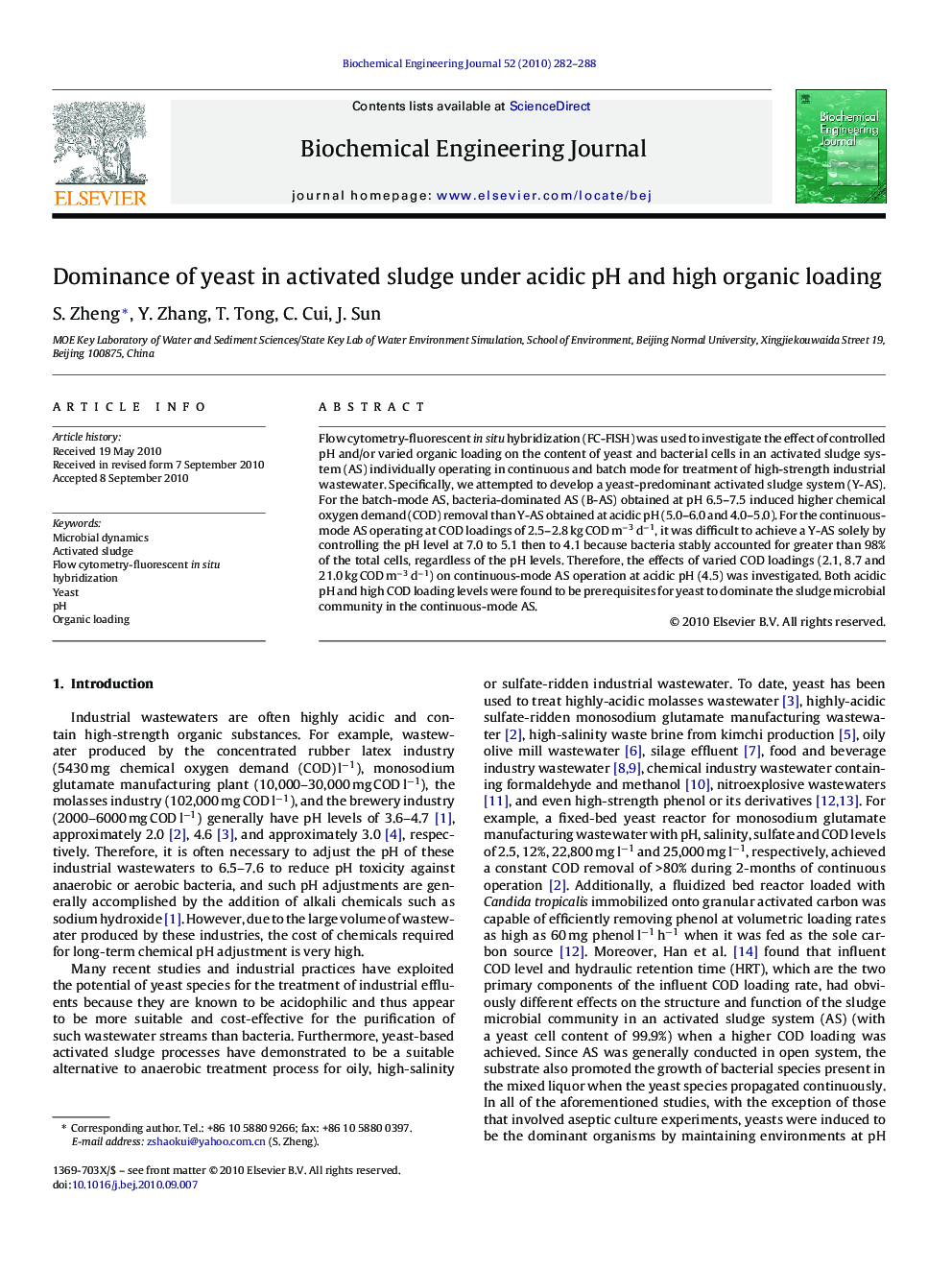| Article ID | Journal | Published Year | Pages | File Type |
|---|---|---|---|---|
| 3901 | Biochemical Engineering Journal | 2010 | 7 Pages |
Flow cytometry-fluorescent in situ hybridization (FC-FISH) was used to investigate the effect of controlled pH and/or varied organic loading on the content of yeast and bacterial cells in an activated sludge system (AS) individually operating in continuous and batch mode for treatment of high-strength industrial wastewater. Specifically, we attempted to develop a yeast-predominant activated sludge system (Y-AS). For the batch-mode AS, bacteria-dominated AS (B-AS) obtained at pH 6.5–7.5 induced higher chemical oxygen demand (COD) removal than Y-AS obtained at acidic pH (5.0–6.0 and 4.0–5.0). For the continuous-mode AS operating at COD loadings of 2.5–2.8 kg COD m−3 d−1, it was difficult to achieve a Y-AS solely by controlling the pH level at 7.0 to 5.1 then to 4.1 because bacteria stably accounted for greater than 98% of the total cells, regardless of the pH levels. Therefore, the effects of varied COD loadings (2.1, 8.7 and 21.0 kg COD m−3 d−1) on continuous-mode AS operation at acidic pH (4.5) was investigated. Both acidic pH and high COD loading levels were found to be prerequisites for yeast to dominate the sludge microbial community in the continuous-mode AS.
